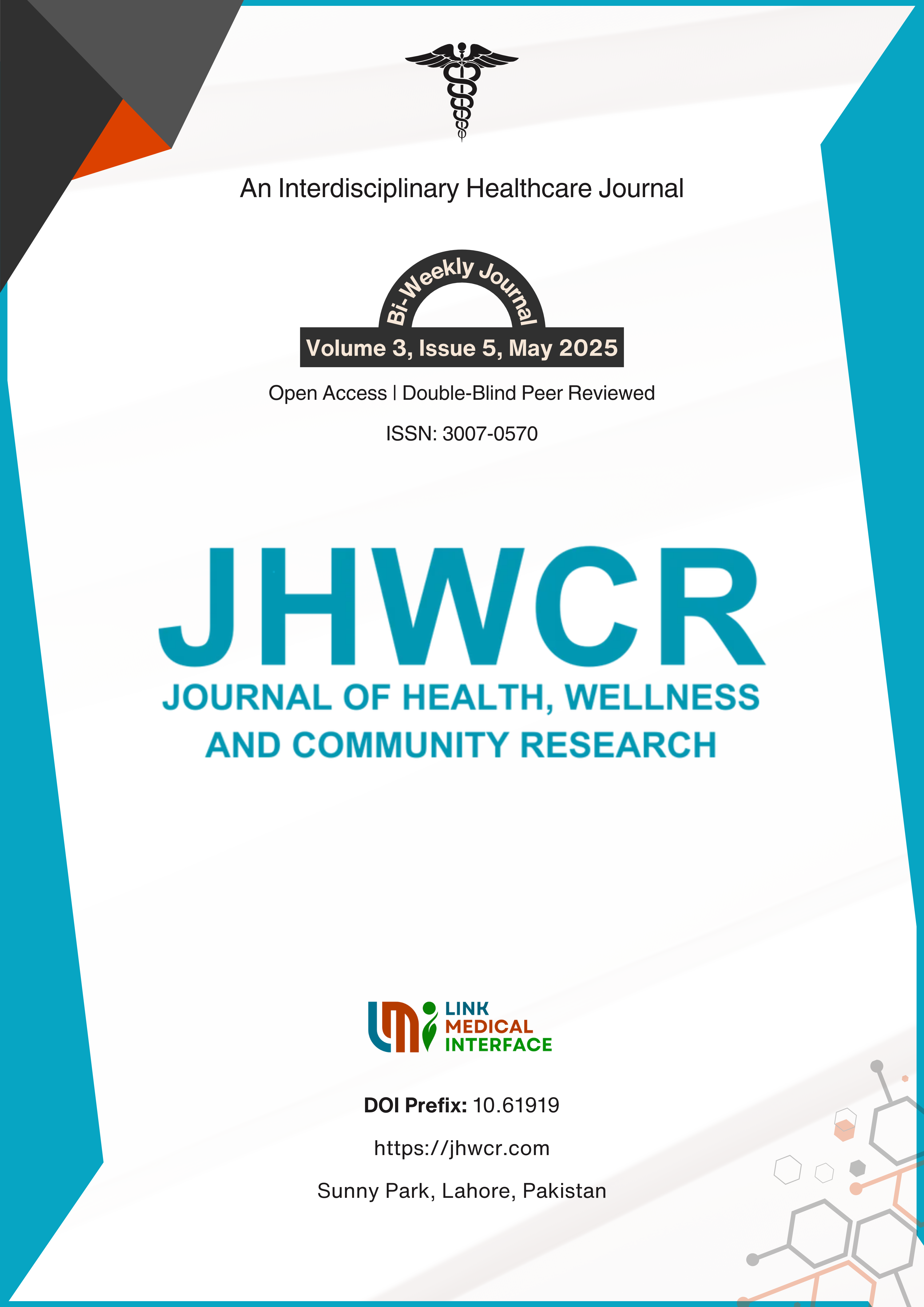Association of Home-Based Exercise Interventions on Pain, Physical Function, and Quality of Life in Individuals with Knee Osteoarthritis: A Cross-Sectional Survey
DOI:
https://doi.org/10.61919/Keywords:
Knee Osteoarthritis, Home-Based Exercise, Pain Management, Physical Function, Quality of Life, Western Ontario and McMaster Universities Osteoarthritis Index, Visual Analog Scale, 6-Minute Walk Test, Short Form-36 Health Survey.Abstract
Background: Knee osteoarthritis (KOA) is a prevalent degenerative joint disease that significantly impairs physical function and diminishes quality of life. While traditional management includes pharmacological and surgical interventions, exercise-based treatments have shown promise for alleviating symptoms and improving patient outcomes. Home-based exercise programs, in particular, offer a practical approach that may enhance accessibility and adherence. Objective: The objective of this study was to assess the effectiveness of a home-based exercise regimen on pain reduction, improvement of physical function, and enhancement of quality of life in individuals with knee osteoarthritis. Methods: A cross-sectional study involving 127 participants with clinically diagnosed KOA was conducted. Participants engaged in a prescribed home-based exercise program over a period of 12 weeks. Outcome measures included the Western Ontario and McMaster Universities Osteoarthritis Index (WOMAC) for pain and physical function, the Visual Analog Scale (VAS) for pain intensity, the Timed Up and Go (TUG) test, the 6-Minute Walk Test (6MWT), and the Short Form-36 (SF-36) for quality of life. Data analysis was performed using SPSS version 25, employing independent t-tests and ANCOVA to compare pre- and post-intervention results. Results: Post-intervention assessments demonstrated significant reductions in pain, with the WOMAC pain subscale scores decreasing from 12.3 ± 3.4 to 9.4 ± 2.1 (p < 0.001), VAS scores from 5.2 ± 2.1 to 3.7 ± 1.5 (p = 0.002), and NRS scores from 5.8 ± 2.0 to 4.0 ± 1.3 (p < 0.001). Improvements in physical function were notable, with WOMAC physical function scores improving from 35.6 ± 9.7 to 28.4 ± 8.2 (p = 0.001) and 6MWT distances increasing from 280.4 ± 48.7 meters to 320.5 ± 52.3 meters (p < 0.001). Quality of life, as measured by the SF-36, showed significant enhancements in both physical (39.2 ± 8.4 to 45.3 ± 7.8, p = 0.004) and mental component scores (42.8 ± 9.1 to 48.6 ± 8.0, p = 0.006). Conclusion: The study provides strong evidence supporting the efficacy of home-based exercise programs in managing knee osteoarthritis. These findings suggest that such interventions can significantly reduce pain, enhance physical function, and improve quality of life, making them a viable alternative to more conventional treatments.
Downloads
Published
Issue
Section
License
Copyright (c) 2024 Sidra Afzal, Sara Fatima (Author)

This work is licensed under a Creative Commons Attribution 4.0 International License.


